Affiliates note: As an Amazon Associate I earn from qualifying purchases. My content may contain affiliate links to products and services. If you click through and make a purchase, I'll receive a small commission. It does not affect the price you pay.
Fermented Tomatoes Recipe – Fermented Cherry Tomatoes with Basil
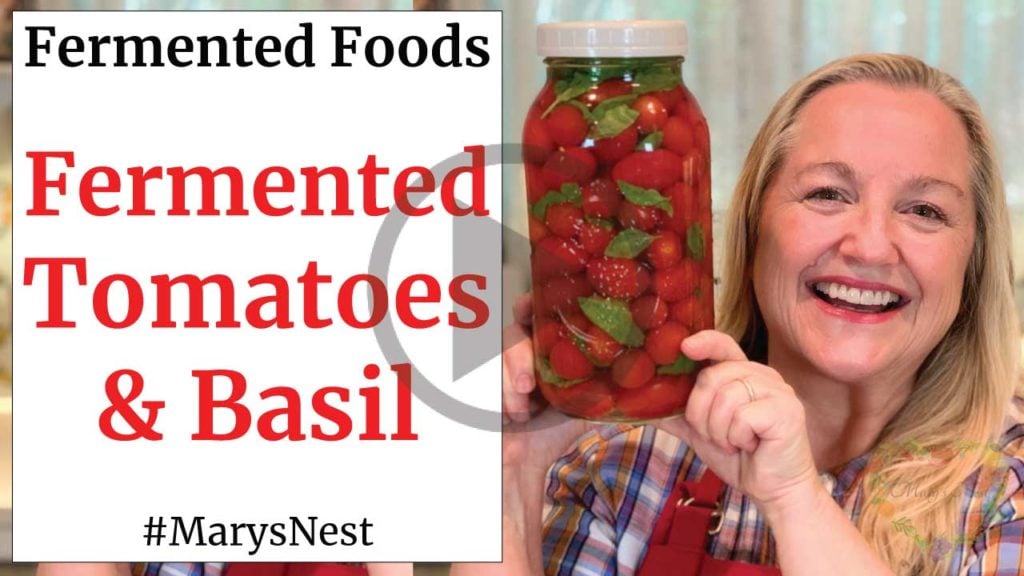
Here is a Fermented Tomatoes Recipe that you can use to make any type of fermented vegetable, including Fermented Cherry Tomatoes with Basil. This lacto-fermentation process creates lacto-fermented tomatoes that are rich in probiotics and are good for gut health.
Why Make Fermented Tomatoes?
Doesn’t it just make sense to eat tomatoes when they are fresh? Or better yet, turn them into a delicious tomato sauce that’s perfect for topping pasta. These options are tasty and nutritious, but if you want to make your tomatoes probiotic-rich, then fermentation is the way to go!
What’s So Great About Probiotics?
Probiotics are a type of “good” bacteria that nourishes our guts. And scientists tell us that when our gut is healthy, the healthier we are overall. You’ve most likely heard that eating yogurt, or other “cultured” dairy, is good for us. Well, the same applies to fermented vegetables. Just like cultured dairy, fermented vegetables are rich in probiotics.
Fermented Tomatoes Aid in Digestion
Fermented Tomatoes benefit our gut health thanks to their rich complex of probiotics, but they also aid in digestion. And they are especially helpful when served with a meal that is heavy in cooked foods, especially meats. So be sure to include these delectable fermented mouthfuls on your next charcuterie platter.
Easy to Make
Fermented tomatoes are so easy to make that you’ll wonder why you haven’t done this before. In my recipe video, I show you how to bring together tomatoes, basil, salt, and water to easily create this nourishing, gut-loving versatile fermented vegetable. And versatile they are! Prepare the tomatoes as a snack or an appetizer, top them on a salad, or serve them as a side dish. In my printable recipe, I show you how to make Fermented Cherry Tomatoes with Basil.
Now, what if you want to try this with other types of tomatoes or vegetables? Yes, you can certainly do that. Whole plum tomatoes are wonderful and delicious when they are fermented in this fashion, and they make a dramatic presentation on any hors d’oeuvre platter.
If you want to try this with other veggies, such as carrots, cauliflower, broccoli, onions, or a combination of vegetables, simply fill your jar with your desired vegetables, add your salt, and top it all off with filtered water. Once fermented, you’ll have a delicious probiotic-rich vegetable that’s perfect when served as an appetizer or side dish.
More Fermented Videos
Now that you’ve learned how to make fermented tomatoes, try your hand at these other tasty ferments. I even share my secret to crisp fermented pickles! With my tips and tricks to making successful ferments, you’ll never have mushy fermented vegetables again!
Fermented Condiments
Try these recipes out to make condiments for your next picnic or to dress up sandwiches on your kitchen table.
Stay in Touch with Mary’s Nest
- Subscribe to My YouTube Channel for Traditional Foods Videos (Free) - When you subscribe, be sure to click on the notification bell that will let you know each time I upload a new video.
- Subscribe to Mary’s Traditional Foods Newsletter (Free) - Get a free 36-page eBook for signing up: How to Stock Your Essential Traditional Foods Four-Corners Pantry.
- Join the Traditional Foods Kitchen Academy - For more detailed videos and exclusive members-only perks, join my YouTube membership community.
- Order The Modern Pioneer Cookbook - Get a hardcover book of Mary's nourishing recipes from a Traditional Foods Kitchen. This bestselling cookbook is published by Penguin Random House with their DK imprint.
- Order The Modern Pioneer Pantry - Get Mary's latest hardcover cookbook about preserving food and making delicious meals from your Four Corners Pantry. Mary's second cookbook is also published by Penguin Random House.
I look forward to having you join me in my Texas Hill Country Kitchen!
I’d like to receive more tips and recipes from Mary’s Nest.
Fermented Cherry Tomatoes with Basil
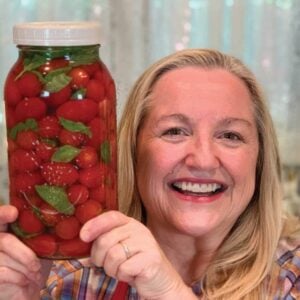
Equipment
- One Half Gallon Jar or Two Quart Sized Jars
Ingredients
- 2 pounds Fresh cherry tomatoes
- 10 leaves Fresh basil
- 2 tbsp Coarse sea salt Alternative salt may be used, such as pink Himalayan salt. If the salt is fine ground, cut the amount of salt in half to 1 tablespoon. Make sure your salt does not contain any anti-caking agents. If the salt contains anti-caking agents, they will be listed in the ingredients on the packaging.
Instructions
- Wash tomatoes and basil.
- Remove any stems from the tomatoes, and for each tomato, use a toothpick to poke a hole in the tomato where the stem was originally. Drop the tomatoes in the jar.
- Layer tomatoes, basil, and salt in the jar. Pack the mixture as tightly as possible without rupturing the tomatoes. (See video.) If using 2 quart-sized jars, divide the ingredients evenly between the two jars.
- Continue to layer the tomatoes, basil, and salt in the jar, leaving an approximately 1-inch headspace at the top of the jar.
- Fill the jar with chlorine-free water, making sure that the tomatoes are completely submerged.
- You can place extra basil leaves and stems at the top of the jar on top of the tomatoes to help keep the tomatoes submerged under the brine.
- Put a screw-top lid on the jar and tighten. Place the jar in a bowl to catch any overflow as the tomatoes ferment. (See video.) Next, place the jar in the bowl in a warm place in your kitchen or pantry out of direct sunlight.
- Each day, loosen the lid of the jar to allow carbon dioxide to escape. The good bacteria produce this gas during the fermentation process. Once the gas is released, retighten the jar lid.
- After 2-3 days (or earlier), you will begin to see bubbles developing in the jar. At this point, refrigerate the tomatoes in the jar. The cooler temperature will slow the fermentation process, but it will continue. The lower temperature will also help to prevent the development of mold, which can be a problem with a summertime ferment, like as tomatoes, when temperatures are often warmer than ferments prefer.
- The fermented tomatoes will be ready to eat in approximately two weeks, and they will stay fresh in your refrigerator for approximately six months. Ferments generally like to be stored at approximately 40°F, so the top shelf of your refrigerator or your refrigerator door are the best storage locations. Alternative storage options include a cellar or root cellar, if those locations can properly maintain a temperature of approximately 40°F.
Video
Notes
Shop for items used in this blog post or video
Favorite Fermentation Supplies
- Half Gallon Canning Jars
- 4-Ounce Jelly Jars
- White Storage Lids
- pH Strips
- Masontops Complete Fermentation Kit (See promocode below.)
- Silicone Pickle Pipes
- Fermentation Glass Weights
- Wooden Pickle Packer
- Wooden Kraut Pounder
Use promo code MARYSNST for a one-time 15% off Masontops and Breadsmart products on Amazon.com.
Recommended Reading
Amazon Shop and Shopping Guide
- Visit Mary’s Nest Amazon Shop
- Visit my Shopping Guide page
Get up to 15% off for stocking your Traditional Foods Pantry and equipping your Modern Pioneer Kitchen, including discounts from US Wellness Meats, Farmhouse Teas, Backwoods Home, Masontops, Cultures for Health, Survival Garden Seeds, Redmond Real Salt, Mother Earth News, and More!
Affiliates note: As an Amazon Associate I earn from qualifying purchases. My content may contain affiliate links to products and services. If you click through and make a purchase, I’ll receive a small commission. It does not affect the price you pay.
Disclaimer:I am not a medical doctor, a medical professional, a dietician, or a nutritionist. All content found on the MarysNest.com website, including text, images, videos, eBooks or eGuides, social media, or other formats, were created solely for informational purposes only. The content is not intended to be a substitute for professional medical advice, diagnosis, or treatment. Always seek the advice of your physician or other qualified healthcare provider with any questions you may have regarding a medical condition or proper nutritional advice. Never disregard professional medical advice or delay in seeking it because of something you have watched in a video or read on this website. Use caution when following the recipe in this video. The creator and publisher of this video and website will not be held responsible for any adverse effects that may arise from the use of this recipe and method or any other recipe and method on this website or corresponding video channel.
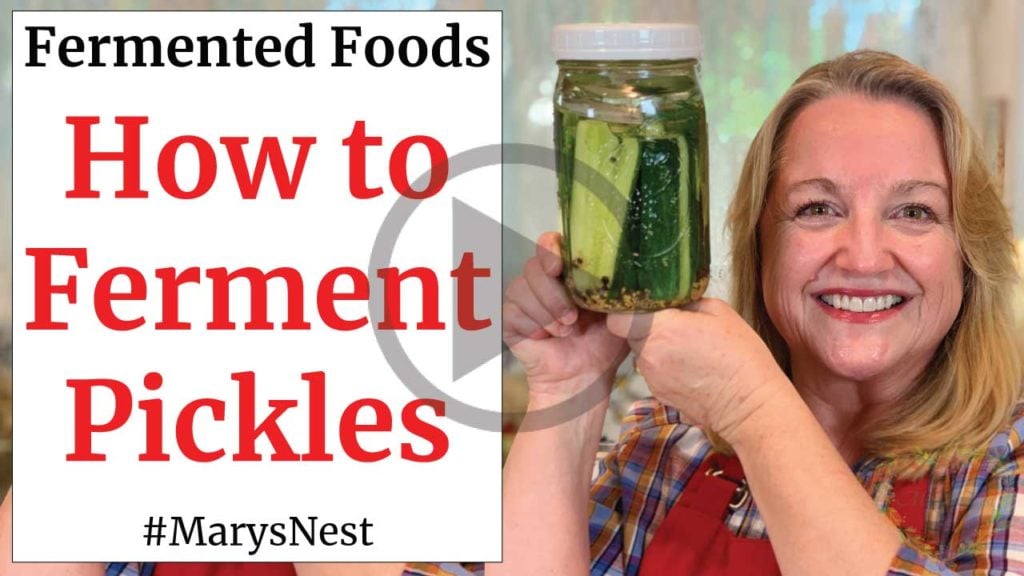
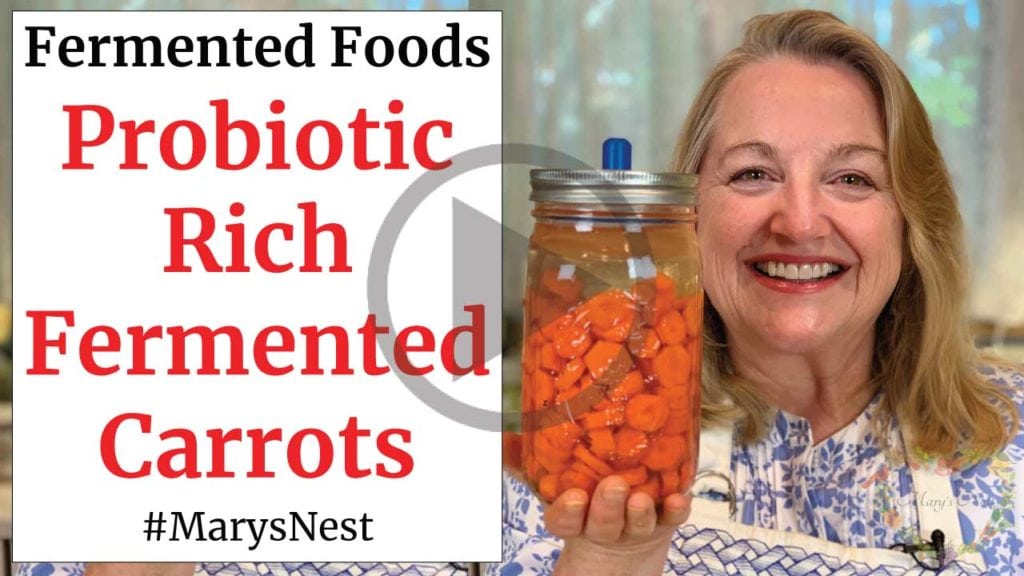
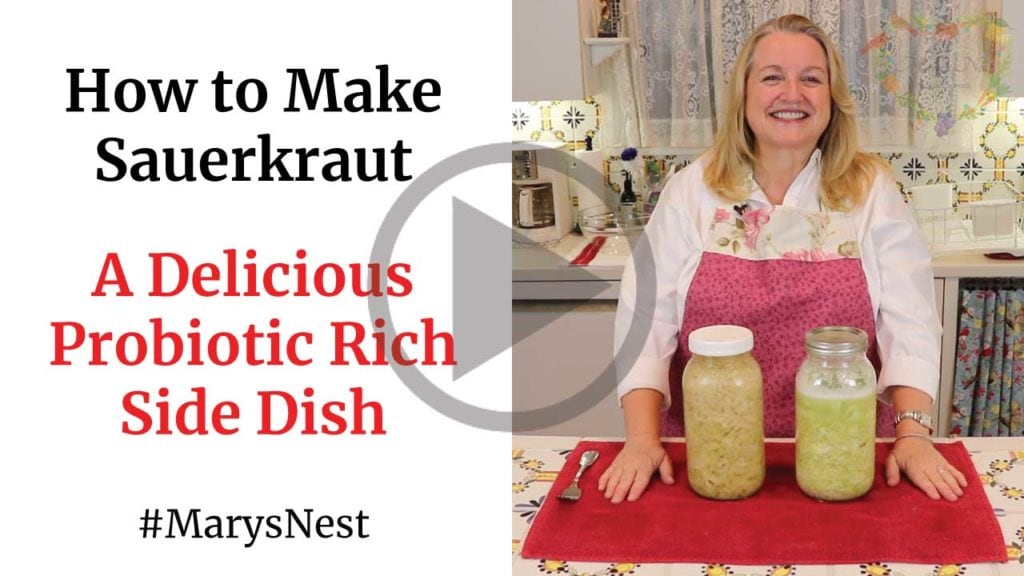
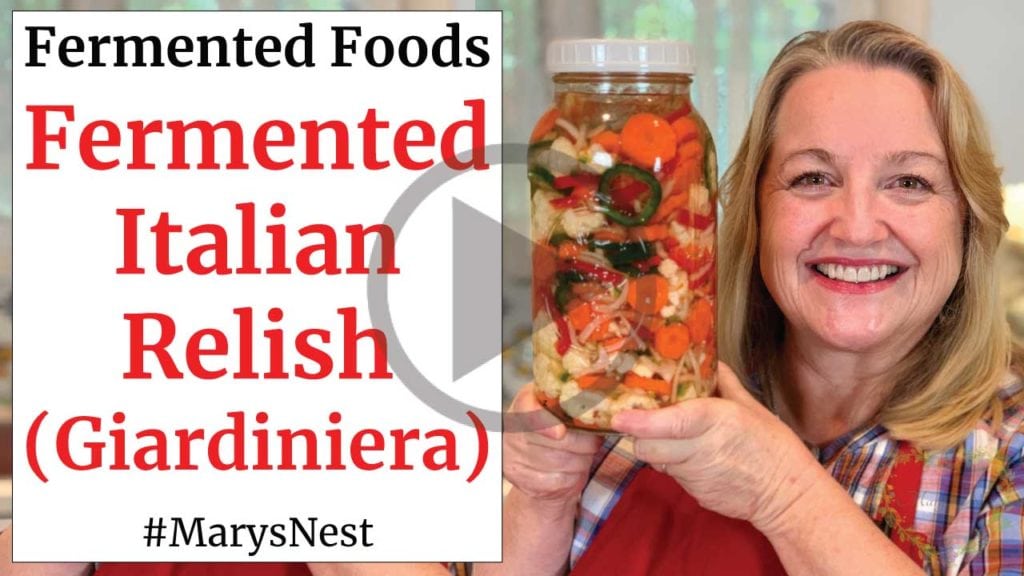
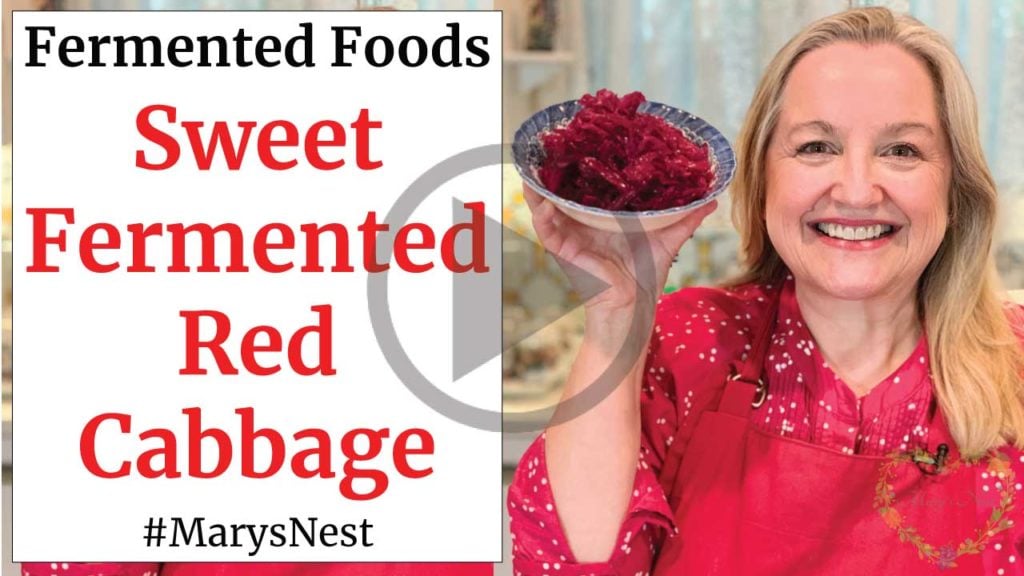
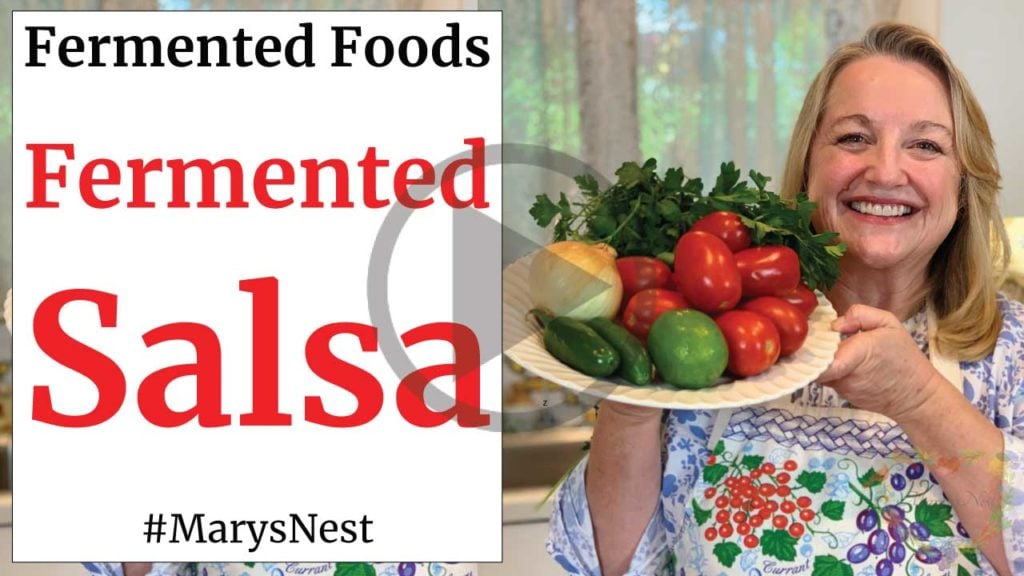

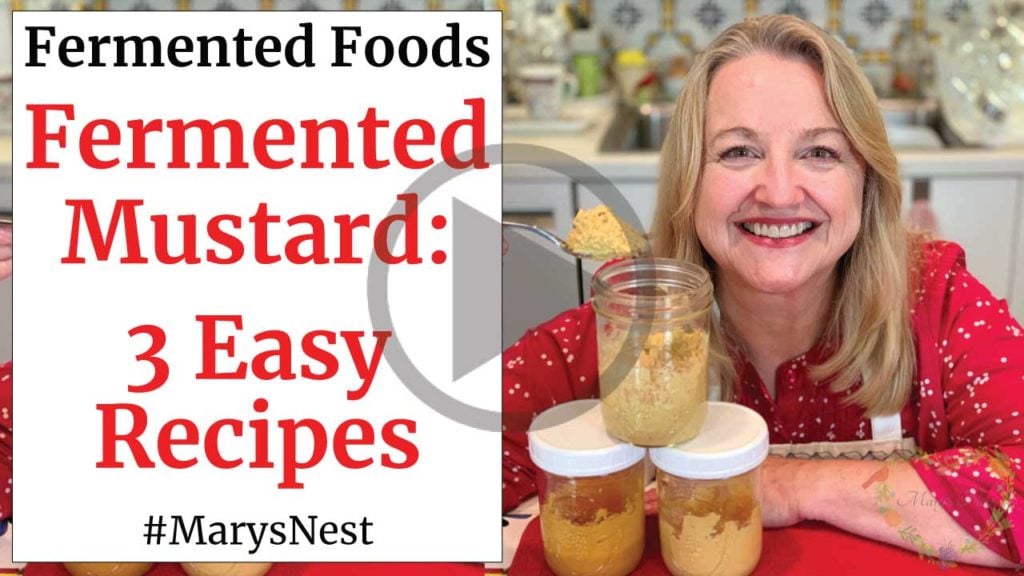

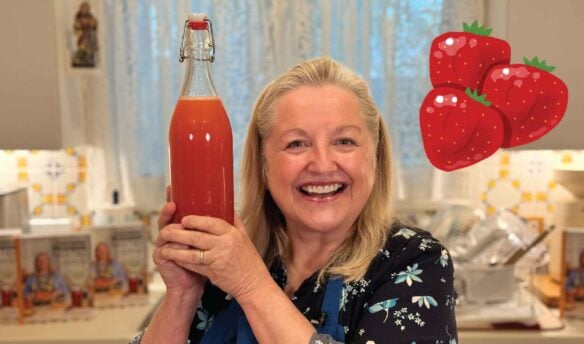

Can distilled water be used?
Hi Emilia, Yes, I think that should work since the salt will be mineralized. Some folks thing that ferments benefit from the minerals in regular water but since you’ll be adding the salt, I think it will work out OK. Keep me posted. Love, Mary
Mary, I made a very small batch to see how it worked. Maybe my kitchen is too cool (although I placed it on the counter by the back of the refrigerator), but four days later and the water has a whitish haze and no bubbles in view. I just put the jar in the fridge, before dumping them in the trash. Wondering what went wrong.
Hi Emilia,
Thanks for your comment. Unfortunately, ferments can be persnickety.
I can’t say for certain, since I’m not looking at the ferment, but sometimes the white film can indicate the presence of kahm yeast, which is not harmful. It’s pesky, but it’s common.
The other possibility is that your tomatoes have started the fermentation process, which gives the liquid a cloud appearance. Sometimes, you may not see much activity in a ferment if your kitchen is on the cool side, but that doesn’t mean that some fermentation process isn’t taking place. In cool temperatures, the fermentation process has slowed down than if it was warmer in the kitchen. You may not always have bubbles during a cooler fermentation.
If you encounter this situation in the future, open the jar to see how they look and smell. If they smell bad, throw them out. However, if they smell okay, I would let them ferment over the next few weeks in the refrigerator (this will help prevent mold if you are worried that might be a problem) and see how they turn out.
Hope your next batch of ferments goes wonderfully!
Thanks for being a sweet friend!
Love and God bless,
Mary
Thank you so much for the explanation!
God bless you too.
I followed your instructions to the letter for fermenting cherry tomatoes. No bubbles ever formed and there was no swishing sound each time I opened the jar. Where did I go wrong?
Hi Susan, I don’t think you did anything wrong. Ferments can be VERY persnickety! If you have had your ferment at room temp for a few days – give it another day or two but then refrigerate it so that mold does not develop. Fermentation will continue but very slowly. However, you will prevent the development of mold which is always a potential threat with warm weather ferments. After about two weeks, taste the tomatoes and see how they are. If they are beginning to tasty “tangy”, you have a successful ferment. Keep me posted.
Please let me know if you have any questions. I’m so happy to help! And I’m SO glad you’re here!! Love and God Bless, Mary❤️😘❤️
PS – Do you know about our FB group? It’s called Mary’s Nest Modern Pioneers. Come join us! We have a lot of fun chatting about Traditional Foods: https://www.facebook.com/groups/171869080205145/?source_id=210509998974645